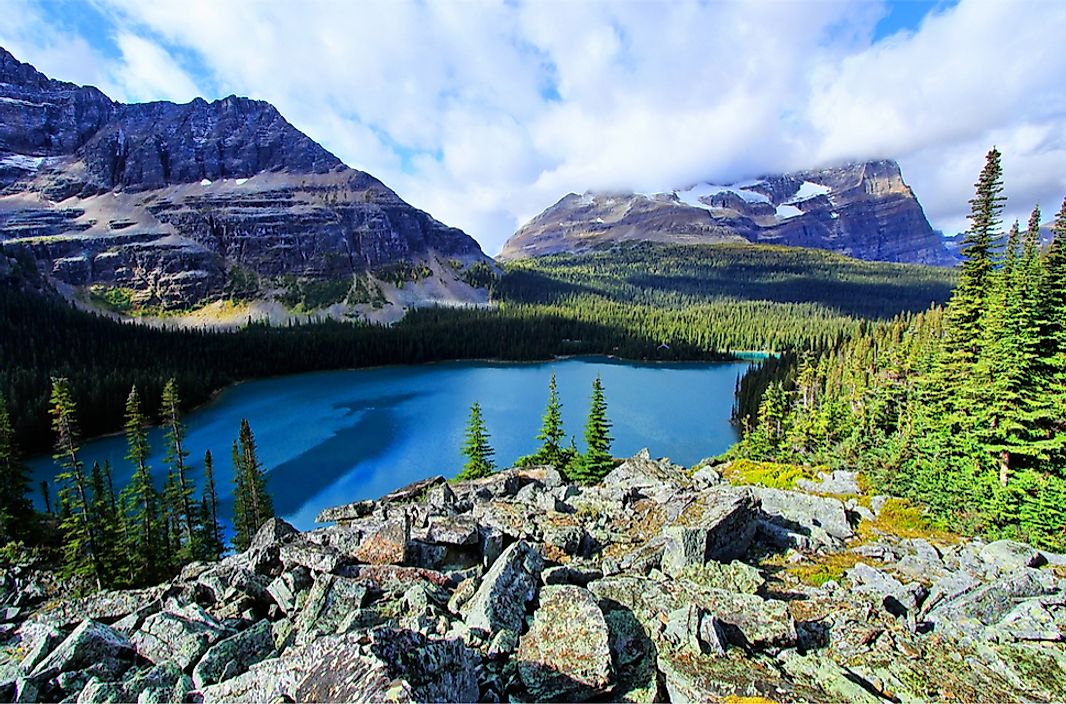The Seven National Parks and National Park Reserves of British Columbia

British Columbia is Canada’s westernmost province and covers a total area 944,735 square km. The province has a 27,000 km long coastline, deep fjords, thousands of islands, and vast stretches of pristine forest. British Columbia has 1,029 protected areas which account for 14.4% of the province's land area. These protected areas include 4 national parks and 3 national park reserves, which are highlighted below.
7. Glacier National Park
Glacier National Park covers an area of 1,349 square km in British Columbia. The park has astounding landscapes featuring ice-capped peaks, massive glaciers, dense forests, cave systems, and several species of flora and fauna. Glacier National Park was established in 1886 when the completion of a railway line allowed tourists to access the previously remote location. Glacier National Park continues to receive large numbers of tourists today.
6. Gulf Islands National Park Reserve
Gulf Islands National Park Reserve occupies an area of 36 square km that includes 15 islands, islets, and reefs of British Columbia's Gulf Islands. Ferries, float planes, and other modes of transport carry visitors to the islands of the national park, which allow tourists to enjoy various facilities. Backcountry campsites can be accessed via kayaking, and campfires are allowed on some islands but not on others. Wildlife watching is a popular activity in the national park reserve, as orcas, seabirds, and harbor seals can be seen in the coastal waters. Tourists visiting Gulf Islands National Park Reserve can enjoy hiking, biking, and picnicking, and some beaches in the national park allow swimming.
5. Gwaii Haanas National Park Reserve and Haida Heritage Site
Gwaii Haanas National Park Reserve and Haidi Heritage Site is located in the Haida Gwaii archipelago, which is about 130 km off the coast of mainland British Columbia. The protected area includes 138 islands of the archipelago. With an area of 3,399.39 square km, Moresby Island is the largest among these islands. The protected area was established in response to demands of the Haida Nation, who are the indigenous inhabitants of Haida Gwaii. For years, the Haida Nation protested against the indiscriminate logging of forests on islands of the archipelago. Culturally inclined towards nature, the Haida people could not tolerate the loss of nature around them. Ultimately, logging became prohibited after the protected area was established in 1988. The area features stunning natural features including rugged mountains, fjords, alpine forests, wetlands, and lakes. A large number of seabirds and many migratory bird species thrive in the national park. The Gwaii Haanas is not easily accessible given its remote location and a lack of transport routes connecting it to the mainland.
4. Kootenay National Park
Kootenay National Park encompasses an area of 1,406 square km and is part of a UNESCO World Heritage Site. The elevation within the park ranges from 3,012 ft to 11,234 ft. The national park was established in 1920 and currently attracts a large number of tourists throughout the year. Both the Kootenay River, from which the park takes its name, and the Vermillion River flow through the park. Hot springs, lakes, canyons, trails leading through glaciers, and rugged mountains exist throughout the park.
3. Mount Revelstoke National Park
Mount Revelstoke National Park occupies an area of only 260 square km and is located adjacent to the city of Revelstoke. The national park was established in 1914 and is currently a popular tourist destination. Woodland caribou, black and grizzly bears, moose, martens, and mountain goats constitute the rich faunal life of the national park. The landscape of the park features the Selkirk Mountains. Interesting trails through the park expose curious visitors to the national park's natural wealth.
2. Pacific Rim National Park Reserve
Pacific Rim National Park Reserve occupies an area of 511 square km and is divided into three distinct zones: the West Coast Trail; the Broken Group Islands; and Long Beach. The protected area was founded in 1970 and was the first one of its kind. The park's landscape is characterized by temperate forests and rugged coasts. Animals like the cougar, wolf, marten, mink, and raccoon are inhabitants of the Pacific Rim National Park Reserve. The reserve is also rich in marine life, such as species of whales, sea lions, seals, and porpoises.
1. Yoho National Park
Located in southeastern British Columbia, Yoho National Park is part of the Canadian Rocky Mountains. The park's name is derived from the local Cree language and means wonder and awe. Yoho National Park covers an area of 1,313 square km and was established on October 10, 1886, which is same day as Glacier National Park. The park is part of a UNESCO World Heritage Site that also includes adjacent national parks such as Banff, Kootenay, and Jasper National Parks. A great diversity of flora and fauna thrive in Yoho National Park. Some of the mammalian species include the moose, elk, lynx, grizzly bear, black bear, and cougar.











